Introduction
We are going to study medicines that are still neglected at the present time even though they have good pathogenesis and whose value is recalled by all the great homeopaths… which everyone seems to have forgotten. One way to neglect a medicine is to confine it to a limited sphere of action.
LEDUM in puncture wounds, forgetting its osteo-tendinous sphere,
DROSERA for coughs, even though it is a great anti-tubercular and joint medicine,
COLCHICUM for nausea, while it is a great rheumatic medicine,
PHYTOLACCA for sore throats, although it belongs to the same group of articular medicines
And of course GUAJACUM, which is simply forgotten and hardly anyone remembers that it affects the throat and joints.
Everyone will have understood the link between these drugs, namely rheumatic disorders. But I want to go further and add to what I have just said about the lack of knowledge about the drugs.
In fact, we are more and more struck by the emergence of these indistinct pathologies, chronic fatigue, fibromyalgia, and others, which, according to the health levels, come to replace acute inflammations that the subjects can no longer “afford”, if I may say so.
However, it is disturbing to note that the current subjects with these disorders may have had strong ENT pathologies in the past, and that their parents may even have a history of RAA (rheumatic fever) in a proportion that does not seem to be due to chance.
RAA is a misnomer because it is a chronic disease triggered by a monstrous immune response to an acute infection with type A beta-hemolytic streptococci. There is a family predisposition, i.e. a rheumatic diathesis that can easily be demonstrated in the family history.
At the beginning we have an angina (cryptic tonsillitis), but the starting point can be a dental infection or a sinusitis. With a lot of candor, the popular medical sites write:
“Its frequency has greatly decreased in industrialized countries but it remains very frequent in tropical countries as well as in the DOM/TOM. In metropolitan France, cases are mostly seen in recently arrived migrants.”
Without suspecting in the least the significance and scope of this observation…
The onset of the disease occurs 2 to 4 weeks after the acute infection, which is not well treated. This means that antibiotics have the interesting property of altering the level of health, which starts to fall, making the vital force of the subject not “tuned” to the frequency of streptococcus A, hence the brilliant result that in our latitudes, there is no longer any AAR.
The disease affects the serous membranes, i.e. the joints (knee), but also the pleura and the pericardium, with a high risk of damage to the heart valves (characteristic murmur on auscultation), or even worse with Osler’s endocarditis.
Nash emphasizes here that the master remedy is AURUM (joint pain, erratic, from one joint to another and then settles in the heart, is here the keynote of the remedy).
|
Guaj | Bell | Iod | Nat-m | Kali-i | Merc | Phyt | Ign | Hydr | Kali-chl | |||||||||
| 2 | 2 | 2 | 2 | 2 | 2 | 2 | 1 | 1 | 1 | ||||||||||
| 2 | 2 | 2 | 2 | 2 | 2 | 2 | 1 | 1 | 1 | ||||||||||
| 3 | 6 | 5 | 5 | 4 | 4 | 4 | 3 | 2 | 2 | ||||||||||
| 1 | G : INFLAMMATION / folliculaire |
|
3 | 3 | 3 | 2 | 2 | 2 |
|
|
|
||||||||
| 1 | MB : INFLAMMATION / Articulations | 2 | 3 | 2 | 2 | 2 | 2 | 2 | |||||||||||
If we take the drugs common to the two headings that define the pathology we arrive at the following group of drugs that will probably all be indicated at some point in a patient with the current pathology:
GUAJACUM / PHYTOLACCA which we will study.
MERCURIUS and KALI-IODATUM, both antidotes, the latter being a complement to Causticum, another huge joint medication. Here a clue is obvious: all these drugs are indicated following mercury abuse.
It is therefore likely that we are dealing with a kind of syphilitic resurgence that corresponds to current health levels. Lyme disease, as we have already seen, is also syphilitic in nature. As the pace of the initial pathology is very rapid, we can also suggest that the drugs of choice will be tuberculo-syphilitic.
BELLADONNA, a good antipsoriatic and can probably be used as such in such low level cases.
The halogenated NATRUM-MURIATICUM, IODUM, and Kali iodatum we have just mentioned.
To come back to our hypothesis, we probably have here drugs of choice in the treatment of these chronic pathologies, probably linked to the transmission of a “streptococcal miasm”, in any case we have here something to support the infectious hypothesis of chronic diseases.
The substance
Tree of the turpentine family, class Zygophyllaceae, it is found in North and South America as well as in the West Indies. It is one of the hardest and heaviest woods in the world (iron wood). It must be worked with metal tools. It is the only wood that sinks in water.
It is used as a ball bearing for boat propellers, or because of its original quality of “self-lubricating wood” as a filler around the propeller pipes of boats and submarines (filler: part used to fill a gap, to make up for a large clearance between various mechanical parts).
The resin of this wood has been used in medicine for more than five centuries, it is registered in the French pharmacopoeia since 1884. It was used in decoction in the treatment of syphilis and tuberculosis; its sap was used in the treatment of arthritis.
Guaiac wood is one of the components of an “elixir of youth” called mamajuana in the Dominican Republic: fragments of various local woody essences, macerated in a bottle of rum, are supposed to have an antirheumatic and aphrodisiac activity (in the latter case, it should also be compared with a Euphorbiaceae, Richiera grandis, commonly known as bois bandé)
Thus, from the outset, it is an anti-syphilitic and anti-tuberculosis drug, so we have every reason to suppose that it covers serious, rapidly evolving pathologies.
“In the first stage of pulmonary tuberculosis GUAJACUM is a wonderful remedy when its symptoms match those of the patient. It has the progressive character of the disease, weakness of mind and body, and symptoms like those belonging to deep constitutional disorders.
In psoriasis complicated with syphilis and intoxication by mercury or other violent drugs, we find a use for this much neglected remedy. It is closely related to CAUSTICUM, SULFUR and TUBERCULINUM.
This remedy was introduced by Hahnemann who experimented with it himself. It has been classified as an antipsoriatic remedy and affects all tissues of the body. It is, however, known more particularly as a great remedy for rheumatism and gout, thus confirming the popular indications. Too far ahead of his time, I suspect that Hahnemann saw the potential that is only now being fully expressed in our altered health levels.
Boger
To study these poorly understood drugs, it is essential to have in mind the affected regions and the synthesis of the drug. This is a kind of Boenninghausen-style sketch, which we owe to Boger and which I have modified in my own way while switching to graphic mode (which was impossible at the time).
By familiarizing oneself with it, one can train one’s mind in Gestalt, by “applying” to the case the important criteria that have been defined in this way, it is as if one managed to extract from the medical material a series of ideas, based on the Hering cross (affected localizations, sensations, etc.), so that it then becomes possible to recombine these ideas with each other to create symptoms.
If GUAJACUM has constriction and affects the thorax, one would expect to have thoracic constrictions. If he has copious, foul-smelling secretions, we know what sweating, white discharge, sputum will look like.
On the left side of the diagram we place the general modalities that show the rheumatic properties of the drug. A first general clue is shown here through the aggravation to touch, since it appears an illusion of being touched, that is to say, a bit like ARNICA how much the sensitivity to contact is present.
Heat aggravates all the symptoms, and it is necessary to note this paradox which is not unusual when one looks at the general modalities: the patient lacks vital heat but heat aggravates it. Effort aggravates considerably. We find in Hering :
| She lay for six weeks in exactly the same place, because the slightest effort aggravated her pain.
| Exhaustion, as after a great effort, especially in the thighs and arms.
The relationship with apples exists readily but is not necessary to prescribe. Cold relieves such a patient if aggravated by heat in all its forms. One will note the need to stretch which must be brought closer to rheumatic pathologies but can certainly be brought closer to the illusion that everything is narrow where the drug is alone in the heading with PLATINUM.
As much as with the latter one imagines that this narrowness is linked to the need to show oneself as being bigger than one is, but with GUAJACUM everything seems tightened, too short (tendons), stiff, tense.
These are the notions that emerge from the sensations of the drug. Such a sensation is combined at the articular level to make it a rheumatic medicine, but also at the pulmonary level for tubercular indications.
Group A: fibrous tissues, primarily joints, muscles and their envelopes, ligaments, but even cartilages are affected and bone as well. In the latter tissue there is softening, suppuration, osteitis, with the insupportability of the slightest touch and swelling.
The affected joint is stiff but above all swollen and painful. this in the high levels of health. When the disorder has been evolving for years, deformities and nodosities can be encountered. The drug is therefore indicated in gout with the procession of manifestations that we describe, including in gouty abscesses, since we will see the suppurative properties in a moment.
The evolution of the manifestations is descending as in most of the drugs (only LEDUM has at a very high level the evolution from the bottom to the top), except for the attack on the fingers which precedes that of the hand. This is a peculiarity which is sufficient to make one think of the remedy in the first place. The other elective location will be the shoulder and the peri-scapular area.
So remember GUAJACUM for growing pains, it is a keynote and yet it is never prescribed. In the circumstance of growth you see in addition how much the illusion of narrowness makes sense.
Besides, it is possible, but I still need some confirmation, that the drug is suitable for subjects who cannot stand confined places or mountainous regions where the horizon is limited. On the other hand, there are also articular laxities (here it follows CAUSTICUM and it is close to CALCAREA FLUORICA).
The result of the inflammation in the lower levels of health is this sensation of generalized pain which would remind ARNICA if it were not for the absence of extravasations. This soreness/stiffness is seen all over.
The eyelids seem to be narrowed in relation to the eyeballs. Some patients will talk about feeling like the eye is too big. The thigh, the back and the neck are the areas most affected. One side of the neck is stiff or it is the shoulder blade, etc.
Group B: the glands are affected in a general way. The tonsils are particularly affected with violent inflammation which can lead to the rheumatic disorder described above. We will apply the signs described in Group B to angina.
The other important gland is the ovary which presents a chronic inflammation, and because of the absence of menstruation, this should make us think of GUAJACUM in polycystic ovaries, this is currently a line of thought. The characteristic here is membranous dysmenorrhea.
Group B-C: abscesses. The drug is very suppurative when the inflammation lasts for a long time and superficially because of the modalities, it can be confused with HEPAR SULFUR, which suppurates immediately.
I have placed this item between the two groups to remind you that abscessation affects the glands as well as being an aspect of the state of the mucous membranes which we will now discuss.
Group C: profuse and foul-smelling secretions. Streptococci are covered primarily by the drug, so you can imagine this type of involvement at any level of the body as long as you have suppuration. It can be the bronchial tubes with catarrh, the va-gina with leucorrhoea, the skin with boils. The other abundant secretion is the sweat, which is nocturnal (tubercular character), but especially of isolated parts like the face.
We enter here to the description of the Group D making the transition thanks to the burning heat in particular of the affected parts. It can be the joint, the skin, often the hand, but very often it is the sensation of the throat.
The angina is right in general, the throat is dry, painful to the touch. It is a medicine for recurrent angina (group B) like PHYTOLACCA. When the inflammation goes to the joints, one can imagine how the violent phenomenon in the throat is stored in a “bastardized” form in the joint (knee).
It is necessary to describe here the sensation of constriction, tension which is also one of the marks of the drug, we mentioned it above.
Group E: the thorax which is the other elective target organ. The stinging pain and other pleural pains make one think of BRYONIA, KALI-CARB, ASCLEPIAS, RANUNCULUS. However, the pain also seems to be very deep and of a gnawing nature.
The drug must be evoked in case of recurrent pleurisy, I gave it once in hospital to a tall, skinny young man who was having his third pneumothorax. He was immediately relieved, and the lesion regressed “on its own” without needing drainage this time. The patient was lost to follow-up and it can still be argued that this third attack was more minimal than the previous two.
The cough is dry, with burning heat of the face and burning fever, we can see here how to decline the manifestations by using the different items that I quote (localization, sensation, etc). Beginning tuberculosis.
“Cough with expectoration, improved by the expulsion of a very small quantity of mucus, this mucus being very fetid like all the excretions of the remedy. Cough in pre-tubercular subjects or in evolution towards pulmonary tuberculosis.
Spasms of the larynx with difficult breathing, sometimes chronic catarrh of the bronchi. Tuberculosis incipiens in rheumatic or gouty subjects. The subject loses weight and evolves towards consumption. Tuberculosis in subjects whose rheumatism has been improved or has disappeared under the influence of an allopathic treatment. This is just another kind of metastasis.” Hodiamont.
The CRABE sign here is the chilliness of the breasts, the feeling of coldness in the breasts. Note also the palpitations which are sometimes violent, this can be a big concomitant.
Rheumatism
Here I do not see how to do better than the great Hodiamont, who also gives us the differential comparisons that come to mind.
“The great sphere of action of GUAJACUM is obviously the rheumatic state, most often acute, but also subacute with a tendency to become chronic. In acute states, GUAJACUM presents a very important characteristic: the sick joint is swollen, red and hot, and is clearly aggravated by the local heat. These are the patients who tell you: ‘I put hot compresses on and it hurt even more’. Or they are given physical therapy, and it made them worse.
“There is local heat, with swelling and redness, as in BELLADONA, and there is an extremely marked aggravation by movement, as marked as in BRYONIA. The pain is very intense and has the intensity of that found in BELLADONA and COLCHICUM.
There is also a nocturnal aggravation which begins around six o’clock in the evening and lasts all night, only to diminish around four o’clock in the morning. The patient suffers very strongly all night and cannot sleep because of his rheumatism.
“This rheumatism is often metastatic; it may occur as a result of angina, or also as a result of a suppressed discharge, orchitis, ovaritis, or any other inflammation of glandular tissue. If external friction is made with a revulsive on this kind of rheumatism, there is a danger of spreading it or sending it to another joint or part of the body.
“Contrary to BRYONIA, the patient does not bear pressure on the diseased joint: if he lies on the diseased joint he is in even more pain, and the weight of the blankets is intolerable. In general, this patient urinates well, which distinguishes him from APIS, and he often makes abundant and fetid urine, like BENZOÏC ACIDUM.
His urine, however, is not so fetid as that of BENZOÏC ACIDUM, which is particularly pestilential, and his rheumatism is not as travelled as in the latter. It does not change places so quickly: fixed in a joint it can remain there for long weeks. The patient also has a tendency to sweat and his sweat is also foul. Moreover, all secretions and excretions of GUAJACUM have a strong or fetid odor.
“In sub-acute or chronic cases, the intensity of the pain will be less, the swelling and the local heat will be less as well, but there will be much more marked tendon and muscle retractions, which will strongly reduce the movements, by ankylosing in good part the affected joint.
In acute cases it is the pain that blocks the movements, in subacute and chronic cases it is the retraction of the ligaments. GUAJACUM rheumatism affects with predilection the shoulders and often also the knees; elbows, wrists and hips are less often affected, but obviously any joint can be involved. When the shoulder is affected, the patient cannot raise his arm or put it back, and it is difficult to put on his shirt, jacket or overcoat.
“Rheumatic stiffness of various joints; stiffness of the neck, nape, back: the remedy is suitable for torticollis. Tugging, tearing and pricking pains in the shoulder and in the arm, in the joints of the fingers and in the thumb.
Pain in the thighs extending to the knees, in the legs and in the tibia. The knee is bent by the contraction of the tendons and cannot be returned to full extension. Elongating pain in the legs extending from the feet to the knees, as in LEDUM.
“Rheumatic pain in the chest muscles, pectorals and intercostals, aggravated by movement and breathing. Pleural and even cardiac pain of the rheumatic type, as in BRYONIA and RANUNCULUS BULBOSUS.
Kent gives a more complete picture here:
“Rheumatism of the muscles of the chest, with much pain on movement. Prickly pain in the chest, on movement and on breathing. The stabbing pains seem to be located in the pleura. Chronic bronchial catarrh with putrid expectoration, when the rheumatism spreads to the thorax. Phtisis pituitosa in rheumatic and gouty patients. Chest pain after riding in the open air. Palpitations. Rheumatic heart disease; frequent weak pulse.”
He may also present bone pains, in the bones of the face and nose, in the malar bones the teeth and jaws. Pain in the tibia and in the bones of the foot. GUAJACUM is suitable for bone pains of growth in tuberculinic children or having a bad heredity. It is also suitable for tuberculosis, syphilitic and psoriatic patients.
Other symptoms
Psychism
There are few elements available. We have mentioned the delusional state, depression and especially indolence with fear of physical exercise. All this brings us closer to the symptoms commonly encountered in chronic fatigue. The keynote “tendency to sit down” is common in these chronic fuzzy states. The absences are related to the tubercular miasm and only clarify the picture.
The headings “Disobedient” (Caust), “Criticizing” (Caust), “Irritability” (Caust), “Obstinate” (Caust), “Opposite” (Caust), “Provocative” (Caust), give us an often found impression of an irritable subject with his pains and who resembles CAUSTICUM very much, but with a more tubercular aspect and loss of concentration and forgetfulness and a more frankly syphilitic aspect decompensated towards nastiness : “haughty” (Caust, Plat), “contemptuous” (Plat), “Misanthropy” (Ledum), “malevolent” (Ledum). This brings us back to LEDUM.
Cephalic extremity
This is one of the rare 3rd degrees of the heading transpiration of the head with the great ones like CALCAREA, MERCURIUS. The constriction like a band which tightens the head is in accordance with what we have just seen and reminds one of GELSEMIUM as well as NITRIC ACIDUM.
The opposite sensation, if I may say so, is that of having a swollen or distended head. This sensation coexists at all levels with the previous one. LEDUM has a valuation for the impression that the brain is badly attached in the head, while walking, with each step, and which is very exactly shared with GUAJACUM.
The fullness and distension here constitute the declination of the heat and other congestion seen in the other organs and which evoke Bryonia and Belladonna.
The tightening produces this strange symptom in the eyes: the spasmodic opening (Bell, Nux-v, Stram) or the widening of the eyelids which is a keynote (Iod, Lyc).
The face itself is tense or has an aged look. There is a great deal of pain, especially on the left (I have not mentioned migraines on the left, but the laterality is clearly left except for the throat), with the classic prickly twinges. It is therefore a very neuralgic drug, which does not fail to affect the teeth either.
Digestive: the choleriform picture
I let Hodiamont speak again:
“He will sometimes present a lack of appetite with nausea and heartburn, sometimes an immoderate hunger. But if he forces himself to eat when he is not hungry, he will be sick. He has a lot of fermentation and noise in the intestines, often with diarrhea, but sometimes he also has constipation. He is, however, generally a patient who eliminates well and is rather prone to diarrhea attacks, like COLCHICUM, but differs from it because he does not have, as he does, the aggravation by local heat.
The desires and aversions of the GUAJACUM patient are characterized by a repugnance for milk, but with a desire for fresh and juicy fruits.
The desire for apples which this patient sometimes presents has even been made a key symptom; but this symptom is part of his general desire for fruit and refreshing, sour foods, and is not a key symptom. Many patients I have cured with this remedy had no particular desire for apples.”
Vomiting, according to our diagram, is mucusy and foul-smelling, just like stool. A small peculiarity is vomiting blood in the evening, especially in summer. There is a lot of rejected air, and important flatulence (more or less incarcerated).
To complete the picture, the pain radiates downwards, into the rectum, vomiting like water settles quickly and this justifies the 3 degrees of relative valuation for GUAJACUM in severe acute gastroenteritis, it is a widely misunderstood indication, to the same degree for infantile pathologies.
Cramps and elongation of the hypochondria (g) are aggravated before the bowel movement and better if a wind is evacuated. One should therefore not systematically throw oneself on VERATRUM or ARSENICUM in these cases. Often it is the appearance of the vomiting that gives the key to the prescription.
Irritation of the bladder: cystitis, urethritis
The sensation of constriction finds here a fertile ground to blossom at the level of the neck which is painful. The pains are violent throbbing, terribly aggravated after ineffective efforts to urinate. The urge to urinate is constant, ineffective, and shortly after urinating a little, it returns unpleasantly. It is therefore a medicine for cystitis, and even for “clap”. The abundant mucus and the smell will make the diagnosis here.
Nocturnal choking: sleep apnea
A little-known indication (one more!) is that of nocturnal dyspnea, which occurs during sleep and wakes up the patient who feels suffocated. It is in acute situations that this indication can be encountered, in general when the mucus is expelled the dyspnea improves. So here we have a picture that comes from the state of the serous membranes and the thoracic mucous membranes, it is not a nervous phenomenon as we find in LACHESIS.
RES: DYSPNEIA / sleep / during: acon, agar, bell, carb-v, cench, cham, con, dig, grin, guaj, hep, ign, kali-bi, kali-c, lach, lact, lyc, manc, meph, merc, nux-v, op, rhus-t, samb, sep, sulph.
A word about GRINDELIA, which here resembles GUAJACUM. The former is a medicine for bronchitis and asthma, the breathing is wheezy with much oppression. There are many scattered rales and expectoration is very difficult, however once it is evacuated the patient breathes better, as in GUAJACUM.
The patient has to sit up to breathe, he cannot breathe lying down, there is a panic fear of suffocation, especially in the dark (CARBO VEG, STRAMONIUM), the patient asks for light. These are generally elderly people with an already very weak heart, so there is often an affected pulmonary circulation and one is at the limit of OAP (Am-c). The pain of the eyeballs if it exists is an excellent concomitant.
Cervical stiffness: torticollis
The directory is full of important headings here, I cannot mention them all but try to give the general idea of these pains and stiffnesses. These increase as the pain increases. The keynote here is the tensing pain, or of course by elancements, notably between the scapulae, under the scapula (d), the whole aggravated with inspiration. The stiffness is accentuated by movement and by the movement of the shoulders, and above all it is a torticollis which occurs after having taken cold.
BACK: Stiffness / Cervical, of the region / cold, after having taken: dulc., guaj., nit-ac., rhus-t.
It is therefore a big neglected remedy in this condition in which RHUS-TOX or DULCAMARA is prescribed routinely. Above all, it is the respiratory movements that are unbearable in Guajacum, something that neither Rhus nor Dulc present to this degree, and the nature of the pain typically neuralgic by twitching.
Sciatica
We have dwelt on rheumatic pain, but I am obliged to mention here the pain of sciatica, which once again makes GUAJACUM a leading medicine, and its lack of knowledge no doubt explains our failures in this indication.
The irradiation downwards will often be found, with pain also in the knees. If we consider the aggravation by heat, movement and touch, it is LEDUM that competes here with our drug. But a particularity of GUAJACUM is the improvement by flexion, including by sitting and especially very aggravated by stretching. To complete the picture: the heat of the bed is unbearable, the patient uncovers himself and yet it is often following an exposure to cold that the disorder appeared. Let us recall here Kent’s description to understand this modality once again in relation to the notion of retraction:
“The knee is flexed due to contraction of the leg flexors. The right leg is inflated and pulled up close to the thigh”.
Sleep
Here is Hering that gives us so many beautiful postcards:
|| Yawning and stretching > General condition of the patient.
Great desire to sleep in the afternoon.
| Restlessness at night and insomnia.
| Feeling of falling frequently wakes him up.
| Nightmare while lying on back; wakes up screaming.
| Waking up: not rested; general feeling of tightness; clothes feel damp.
The last symptom nicely combines the constriction with the terrible aggravation of wetness, clothes may feel wet from night sweating, the sensation being amplified by the extreme sensitivity to moisture.
The sensation of falling is a keynote of THUJA and BELLADONNA, it is found here alongside many dreams with knives: of being cut up, of being stabbed, of battles. Hahnemann adds scientific dreams that I leave for your consideration!
Comparisons
Few remedies have this local aggravation by heat, but it is good to recall them: APIS, LAC CANINUM, LEDUM AND PULSATILLA, which present this same modality of aggravation by heat and improvement by cold compresses.
BRYONIA is close to it by its strong aggravation by movement, but it differs from it because it is improved by pressure and by lying on the painful side, which is the opposite of GUAJACUM.
COLCHICUM is the remedy which is the closest to it: it has the sharp pains, the aggravation by movement, the nocturnal aggravation, the diarrhea and the abdominal colic. But COLCHICUM is not aggravated by local heat. APIS is easily distinguished from it by its lack of thirst and decreased urination.
Like PHYTOLACCA, it causes rheumatism after angina, but this one is a cold remedy. Ledum is close to it in its aggravation by local heat and its irradiation from the feet to the knees, but in LEDUM the joint is rarely locally red, it presents rather a white edema, and the pains are less violent in Ledum than in GUAJACUM or Colchicum. With BENZOÏC ACIDUM the pains are more mobile and the urine more pestilential.
In cases that have become chronic and present ligament retractions, it is very close to CAUSTICUM which is then its complement.

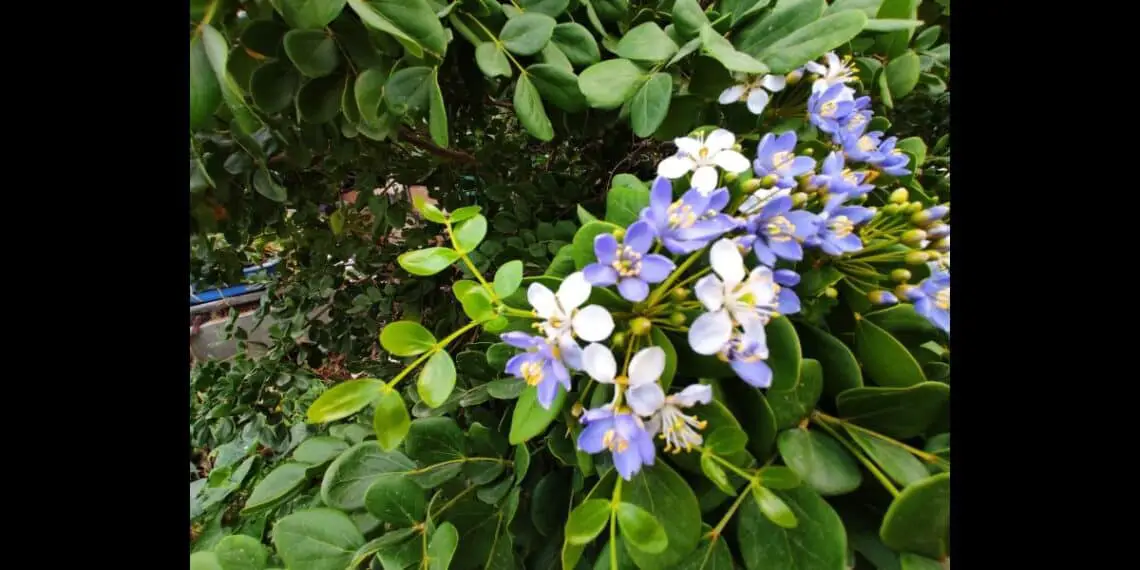
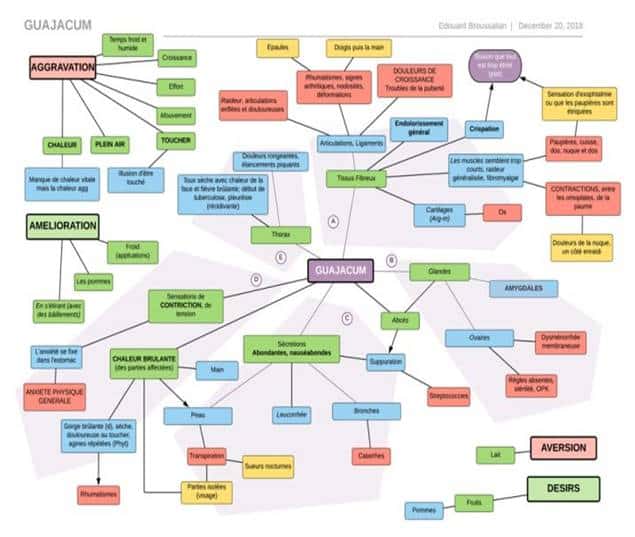
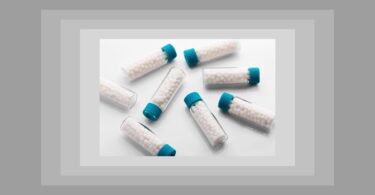
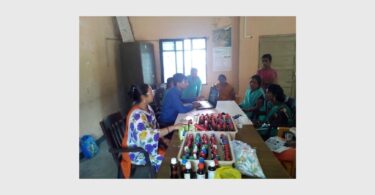
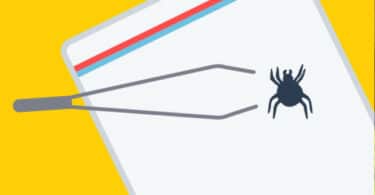

Magnifique! merci!!!!
Thank you for the excellent explaination of Guajacum. I have written pages of notes. You explain remedies in a deep and very visual manner.